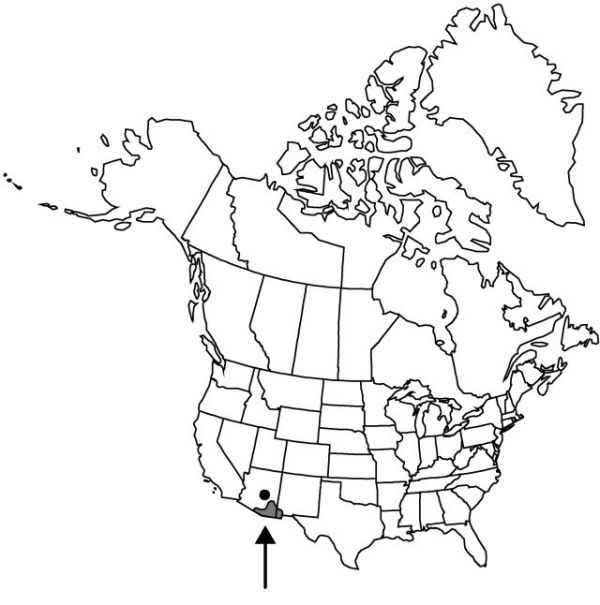Difference between revisions of "Agave palmeri"
Trans. Acad. Sci. St. Louis 3: 319. 1875.
FNA>Volume Importer |
FNA>Volume Importer |
(No difference)
| |
Revision as of 19:34, 24 September 2019
Plants acaulescent, rarely suckering; rosettes usually solitary, not cespitose, 4–13 × 7–13 dm, open. Leaves ascending to spreading, 35–92 × 3.5–19 cm; blade pale to glaucous-green or green, sometimes tinged reddish, not cross-zoned, linear-lanceolate to lanceolate, rigid, adaxially concave toward apex, abaxially convex toward base; margins straight or somewhat undulate, armed, teeth single, well defined, firmly attached, 3–6 mm, (0.5–)1–2 cm apart, interstitial teeth 4–6, mostly along distal 2/3 of margins; apex not conspicuously incurved, spine reddish brown to brown, acicular, 3–6 cm. Scape (1.7–)4–6.5(–7.2) m. Inflorescences broadly paniculate, not bulbiferous, open; bracts persistent, triangular, 1–5 cm; lateral branches 8–26(–32), slightly ascending, comprising distal 1/3 of inflorescence, longer than 10 cm. Flowers 8–16 per cluster, erect, 4.5–7.5 cm; perianth cream to pale yellow or light green, tube not shallow, urceolate, 10–18 × 10–16 mm, limb lobes persistent and often leathery during and after anthesis, erect, strongly unequal, (6–)9–18 mm, apex often flushed with maroon; stamens long-exserted; filaments inserted at 2 levels, above mid perianth tube and near rim, erect, pale yellow or reddish, 4–5.5(–5.8) cm, apex often flushed with maroon; anthers yellow, 11–25 mm; ovary 1.8–3.6 cm, neck slightly constricted, (0.5–)4–6 mm. Capsules short-pedicellate, narrowly oblong to oblong, 3.5–6 cm, apex short- to long-beaked. Seeds 5–7 mm. 2n = 60.
Phenology: Flowering late spring–summer.
Habitat: Sandy to gravelly places on limestone in oak woodlands and grassy plains
Elevation: 900–2000 m
Distribution

Ariz., N.Mex., nw Mexico.
Discussion
Agave palmeri hybridizes with A. chrysantha in Arizona.
Selected References
None.